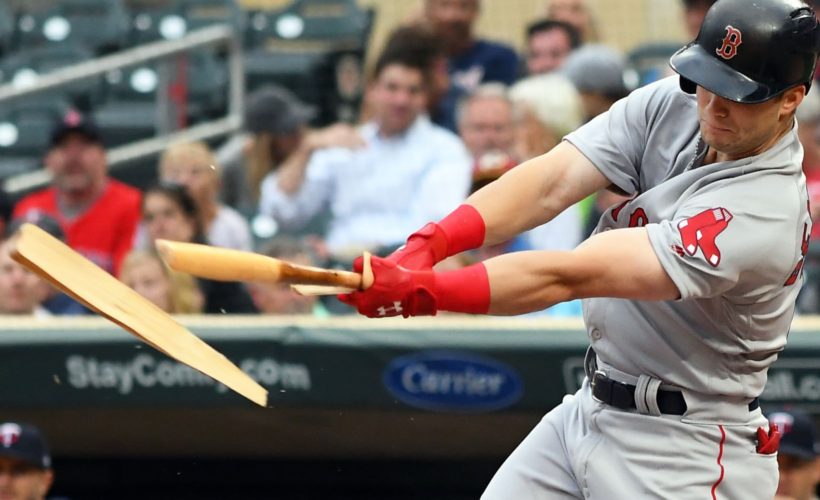Major League Baseball spring training is underway and some of the biggest concerns about spending by teams headed into the MLB season have now been addressed, with roughly $1 billion spent on new player contracts within the last two weeks.
2018, led by the Miami Marlins’ 52 percent decline — the laggard was no surprise, as the Marlins traded both 2017 National League Most Valuable Player Giancarlo Stanton to the New York Yankees and Christian Yelich to the Milwaukee Brewers (who went on to win the 2018 National League MVP award) before the season began, as part of the beginning of a long rebuilding process.
Several currently successful teams embraced a rebuilding process, such as the 2017 World Series champion Houston Astros and 2016 World Series champion Chicago Cubs. The Padres will be another test case this season: The team inked the Machado deal after amassing what is widely regarded as one of the best farm systems in baseball, but also after close to a decade of consistently poor results on the field — the team has not had a winning record since 2010 and has not made the playoffs since 2006.
Like the Padres’ 66-96 record last season, there have been several other teams who have drowned in losses, mostly from stripping talent away, attempting to rebuild younger and cheaper rosters. The Baltimore Orioles went 47-115 last season; the Chicago White Sox and Cincinnati Reds have both had five or more straight losing seasons since 2014.
Stephen J.K. Walters, a professor of economics at Loyola University Maryland and former economic advisor to MLB teams, said mid- and small-market teams are taking an approach that is defensible. “The current amount of competitive imbalance — for example, Baseball Prospectus forecasts that only 5 of 15 American League teams will have winning records, with 82 wins or more — is chiefly a result of mid- and small-market teams’ acceptance of the idea that they can get away with boring their fans for a few years as also-rans while they hoard high draft picks and prospects, and then they’ll be good and all will be forgiven.”
According to Roto Champ, the Padres now have the second-best prospect in baseball with Fernando Tatis Jr., a 20-year-old shortstop from the Dominican Republic and son of a former major leaguer. The Padres, White Sox, Reds and Rays possess a combined seven of the top 20 players on Roto Champ’s list.
Under the current Collective Bargaining Agreement (CBA), revenue sharing dollars have to be utilized in effort to try and improve winning but that does not necessarily mean those dollars have to be invested in free agency. The MLB commissioner may require a team to submit a report that details its efforts to win over the next two years if he feels that team has violated any of the rules that come along with the revenue sharing procedure.
Last year, the MLB Players Association filed grievances against the Tampa Bay Rays, Miami Marlins, Pittsburgh Pirates and Oakland Athletics, claiming each team did not spend its revenue sharing money in the expected manner.
In the Moneyball era, spending smart on talent doesn’t have to mean spending the most and there are examples of tighter-wad teams performing on the field at a high level. The Athletics made the playoffs last season, losing to the Yankees in the American League wild card round. The Rays won 90 games, but fell short of clinching a playoff spot. Each of these team’s 2018 payrolls was below $90 million and this year seems to be heading in the same direction. These four teams rank towards the bottom (25-30) of team payroll trackings, with the Rays at a league low just above $51 million.
MLB Commissioner Rob Manfred addressed the grievances during a recent spring training appearance with the Pittsburgh Pirates president Frank Coonelly. “Tony Clark (MLBPA Director of Player Relations) started the assertion that teams aren’t trying to win by singling out four teams,” Manfred said, according to a report in the Pittsburgh Gazette. “He did a very poor job with those teams. One won 97 games, another won 90, and the other was a game above .500, right Frank (Coonelly)? Two games above .500. Our teams are trying. They all want to win.” Manfred added, “This narrative that our teams aren’t trying is just not supported by the facts. Our teams are trying. Every single one of them wants to win. It may look a little different to outsiders because the game has changed. The way people think about putting a winning team together has changed. But that doesn’t mean they’re not trying.”
Walters said part of the competitive balance problem is the revenue sharing model used by the MLB.
“The fix: a requirement that the bulk of revenue-sharing receipts gets spent on major-league talent,” he said. “In any case, competitive balance is more about ‘compression’ of spending on payroll. … To encourage those low-spending, small-market teams to buy a little more talent, I’d tweak MLB’s revenue-sharing formula. It’s complicated, but right now money gets distributed based on market size, but if it was a combination of market size and wins, that would breathe more life into the free agent market.”
In effect, it would incentivize smaller market teams to spend more on players and create a positive feedback loop in which spending more would result in receiving more from revenue sharing.
“Optimal revenue sharing is an empirical question because it ultimately depends on the supply-side objectives of club owners throughout the league. Owners range from being profit maximizers who are only in it for the money to sportsmen gamers who are only in it to win it,” said John Vrooman, an economics professor at Vanderbilt University.
But not all economists agree that revenue sharing is broken, or even, the root of the problem. David Berri, professor of economics at Southern Utah University and the author of “Sports Economics” views a limited population of talent rather than revenue sharing as the primary reason for the competitive imbalance.
“Baseball was not competitive in the first half of the 20th century because the talent pool was restricted (only white males from the U.S. played). Racial integration and a global search for talent expanded the talent pool and made the game much more competitive,” Berri said.
None of this is to say the business of baseball is not a financial success. In fact, the MLB is flush with cash. The league grossed $10.3 billion in 2018, the 16th-consecutive year that the league saw record gross revenue, according to a widely cited annual Forbes report based on information provided from league sources to baseball writer Maury Brown. And despite a 4.1 percent attendance drop in 2018, television broadcasts for twelve major league teams ranked first in their market in primetime, according to Major League Baseball.
The MLB saw a five-year viewership high on its Fox package, which in part contributed to a seven-year extension with Fox Sports, continuing to air World Series and All Star games through 2028, an extension worth a reported $5.1 billion.
The MLB also was ahead of professional sports league peers in its development of streaming technology, a forward-thinking effort that ultimately resulted in Disney’s billion-dollar-plus purchase of BAMTech, the MLB’s internet start-up, now valued at close to $4 billion.
Although the MLB has crowned eight different World Series winners in the last 10 years, it has for the most part been a similar set of teams making the playoffs each year. The Los Angeles Dodgers (who lost in the last two World Series) have consistently won the National League West since 2013. The Boston Red Sox (the current World Series champion), have won four titles since 2004. And the New York Yankees, another money spending powerhouse, have only missed the playoffs four times since 2008. These teams are consistently atop league leaders in payrolls.
Despite competing for a good majority of last season, the Phillies faded down the stretch, finishing the season with an 80-82 record. Phillies owner John Middleton said in November that his organization was going into the offseason ready to spend “and maybe even be a little bit stupid about it.”
As Red Sox owner John Henry put it: “It’s very difficult to predict things in baseball, to predict player performance. Spending more money helps.”
Source:CNBC





